Are you tired of dealing with frequent ice maker issues in your Samsung refrigerator?
If you have ever experienced malfunctioning ice makers and endless repairs, then this blog post is for you. Put an end to the hassle of thawed ice cream and lukewarm drinks.
Here, we’ll explore the most common problems Samsung refrigerator owners face with their ice makers.
Get ready to discover practical solutions and expert tips to keep your ice maker running smoothly.
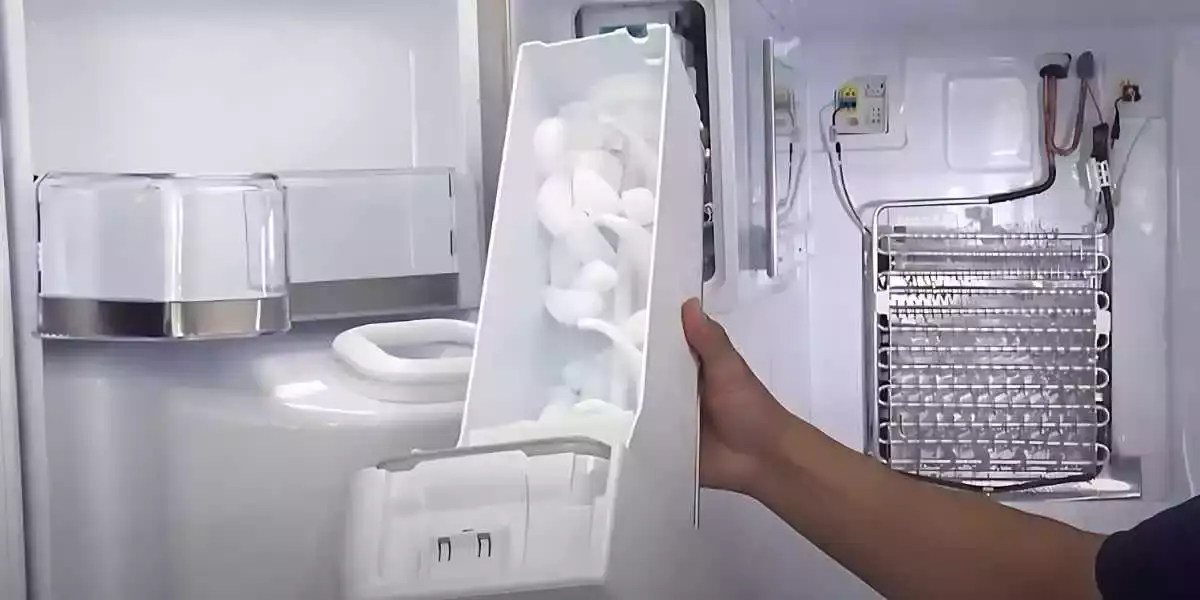
What are the Common Samsung Refrigerator Ice Maker Problems?
Common Samsung refrigerator ice maker problems can vary, but here are some issues that users have reported:
Ice maker not making ice:
When the ice maker fails to produce ice, it can be frustrating. Water inlet valves, which control water flow into ice makers, may be faulty.
If the valve is defective, it may not be allowing water to enter the ice maker, resulting in no ice production.
A clogged water filter may restrict the flow of water. Broken motors or faulty thermostats can also prevent ice production from an ice maker assembly.
Ice maker not dispensing ice:
An issue with the dispenser mechanism may cause the ice maker to fail to produce ice. A defective dispenser motor drives the mechanism responsible for pushing out ice.
The motor may not rotate or function properly, preventing ice dispensing. Frozen ice buckets or b inside the dispenser chute can also obstruct ice cube movement.
A malfunctioning dispenser switch can also affect ice dispensing.
Ice cubes are too small or misshapen:
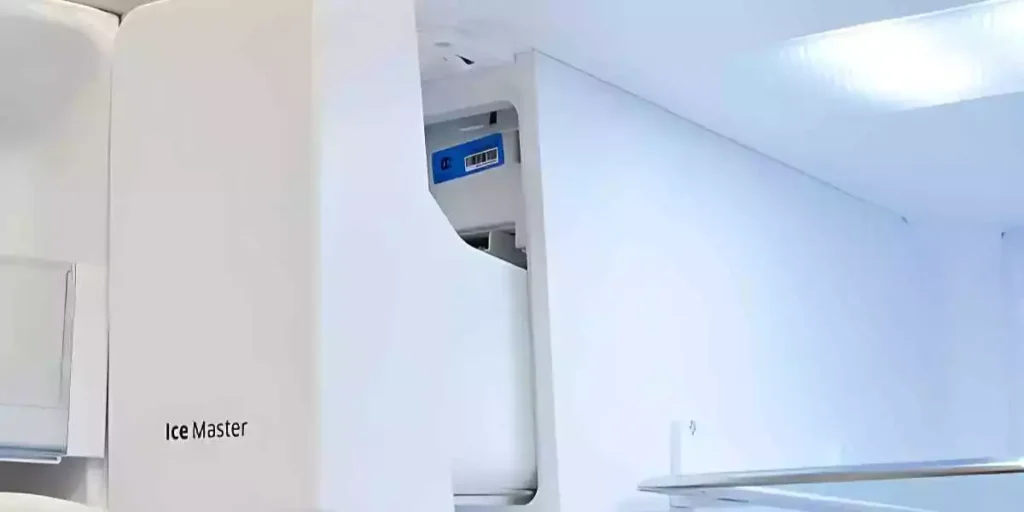
You may need to replace the water supply if you are getting small or irregular ice cubes from your Samsung refrigerator.
Low water pressure can result in ice cubes that are smaller or misshapen due to insufficient water flow.
It’s advisable to check the water pressure in your home and ensure it meets the recommended level.
Water inlet valves, which regulate water flow to the ice maker, can also affect ice cube size and shape.
Ice buildup in the ice maker:
Ice buildup within the ice maker can disrupt its operation. A faulty defrost system in the refrigerator can cause this problem.
Defrost systems fail to remove frost or ice from evaporator coils, causing ice buildup in the ice maker.
Defective water inlet valves can also contribute to ice accumulation due to excessive water flow.
Blockages or frozen water lines can also impede the water supply to the ice maker.
Leaking water:
Water leakage from the ice maker can be caused by a variety of problems. A damaged water line, such as a cracked or disconnected tube, can result in water leakage.
A cracked ice maker assembly or a faulty water inlet valve can also cause water leaks.
Identify the leak source and inspect the components for damage or malfunction.
Ice tastes or smells bad:
Samsung refrigerators may produce ice that has an unpleasant taste or odor. One possible cause is a dirty water filter.
The filter can accumulate contaminants and impurities, affecting the quality of the ice.
It’s recommended to replace the water filter regularly as per the manufacturer’s instructions.
A stale water supply can also contribute to unpleasant-tasting ice. Water that is not refreshed frequently or that has not been used for a long time can taste stale. Food items with strong odors should not be kept in the freezer.
How to troubleshoot an ice maker that doesn’t produce ice?
If your ice maker is not producing ice, you can try troubleshooting the issue using the following steps:
Check the water supply:
Ensure that the water supply to the refrigerator is properly connected and turned on. Make sure the water line is not kinked or blocked.
If you have a water dispenser on the refrigerator, test it to see if water flows through it.
If there is no water flow, you may need to check the water supply line and the water inlet valve.
Verify the ice maker is turned on:
Ensure that the ice maker is switched on. Look for an on/off switch on or near the ice maker or check the control panel of your refrigerator.
Consult the user manual for your specific model to locate the switch and ensure it is in the correct position.
Inspect the ice maker assembly:
Examine the ice maker assembly for any visible issues. Look for any ice obstructions, such as ice cubes stuck in the ice maker or a frozen ice mold.
Clear any ice blockages or remove any stuck cubes carefully. Be cautious not to damage any components.
Reset the ice maker:
Some Samsung refrigerators have a reset button specifically for the ice maker. Press and hold this button for a few seconds to initiate a reset.
Refer to your user manual to identify the location of the reset button for your model.
Check the temperature settings:
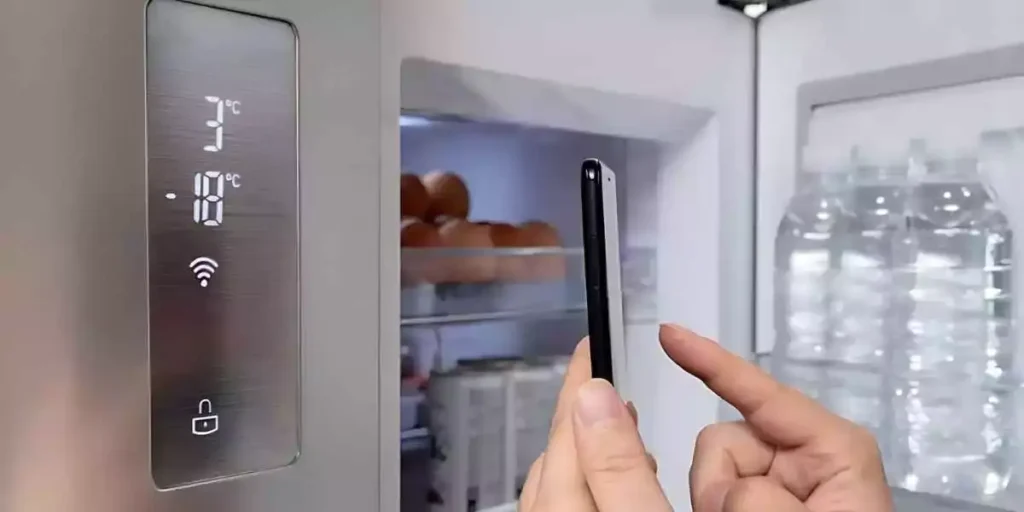
Ensure that the freezer temperature is set to the recommended level. Most ice makers require a freezer temperature of around 0°F (-18°C) to produce ice properly. Adjust the temperature setting if necessary.
Inspect the water inlet valve:
The water inlet valve controls the flow of water into the ice maker. If it is defective or malfunctioning, it can prevent water from entering the ice maker.
Check if the valve is clogged, damaged, or not functioning correctly. If you suspect a problem with the valve, it may need to be replaced.
Verify the ice maker components:
Examine the various components of the ice maker assembly, such as the motor, thermostat, and sensors. Look for any visible signs of damage or wear.
If any component appears faulty, it may require professional repair or replacement.
Clean the ice maker:
Over time, mineral deposits or other debris can accumulate in the ice maker, affecting its performance.
Follow the manufacturer’s instructions to clean the ice maker thoroughly. Remove the ice bin and rinse it, wipe down the ice maker interior, or use a gentle cleaning solution.
Common Signs of a Faulty Samsung Refrigerator Ice Maker
Here are some common signs that may indicate a faulty ice maker in a Samsung refrigerator:
No ice production:
If the ice maker is not producing any ice at all, it could be a clear indication of a problem. Check if the ice maker is turned on and the water supply is properly connected.
If everything seems fine but there is still no ice production, it suggests a potential issue with the ice maker components.
Insufficient ice production:
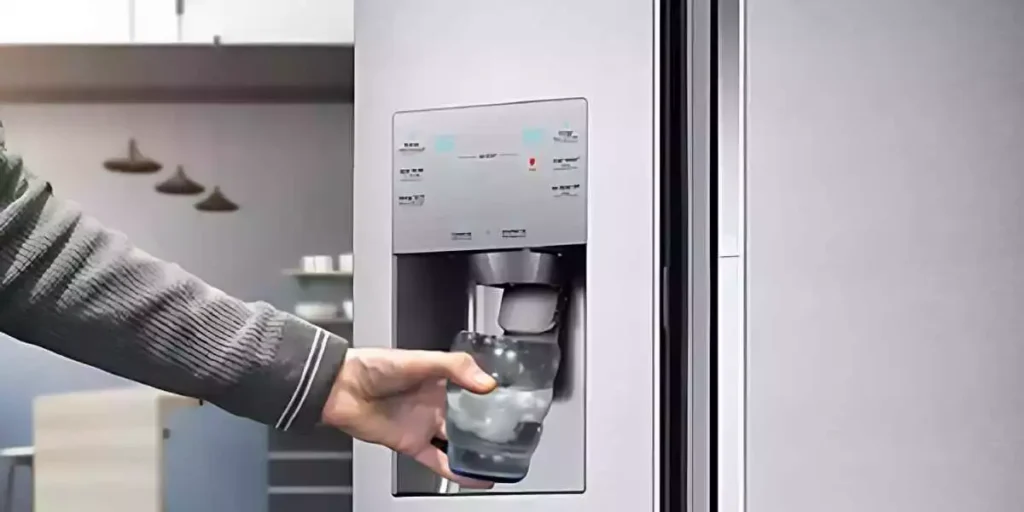
Ice production could be decreasing over time if the ice maker is producing less ice than usual.
This may indicate a malfunctioning component, such as a faulty water inlet valve or a worn-out motor.
Ice cubes are misshapen or too small:
If the ice cubes being produced are misshapen, unusually small, or hollow, it may be a sign of an issue.
A malfunctioning thermostat or motor can cause this, as can insufficient water supply to the ice maker.
Ice buildup or freezing issues:
An excessive buildup of ice may indicate a problem with the defrost system or the water inlet valve.
The accumulation of ice around the dispenser or in the freezer compartment can also indicate a malfunctioning ice maker.
Leaking water:
Water leakage around the ice maker or in the vicinity of the ice dispenser is another sign of a faulty ice maker.
It could be due to a damaged water line, a cracked ice maker assembly, or a malfunctioning water inlet valve.
Water leakage should be addressed promptly to prevent further damage.
Abnormal noises:
An ice maker making unusual noises, such as grinding, buzzing, or clicking, could indicate a problem.
It could be a result of a worn-out motor, a faulty fan, or other damaged components within the ice maker assembly.
Inconsistent ice dispensing:
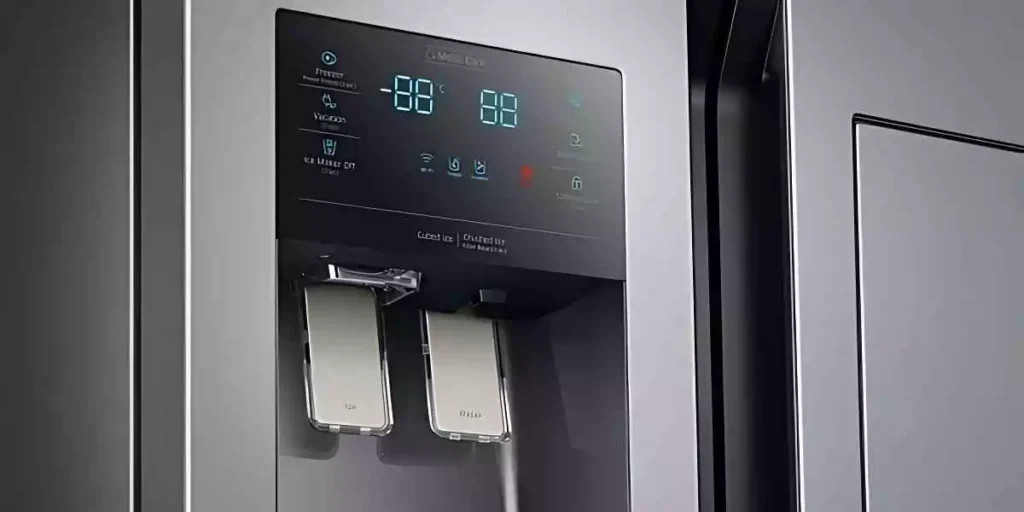
Ice may be produced but not dispensed consistently or may get stuck in the dispenser if the dispenser motor or mechanism is damaged.
Maintenance Tips for Samsung Refrigerator Ice Makers
By following these simple steps, you can ensure a steady supply of ice and prolong the lifespan of your ice maker.
Clean the ice maker and ice bin:
Begin by unplugging your refrigerator or switching off the power supply. Use mild detergent and warm water to thoroughly clean the ice bin and ice maker.
Rinse them well and allow them to air dry completely before reassembling.
Check the water supply line:
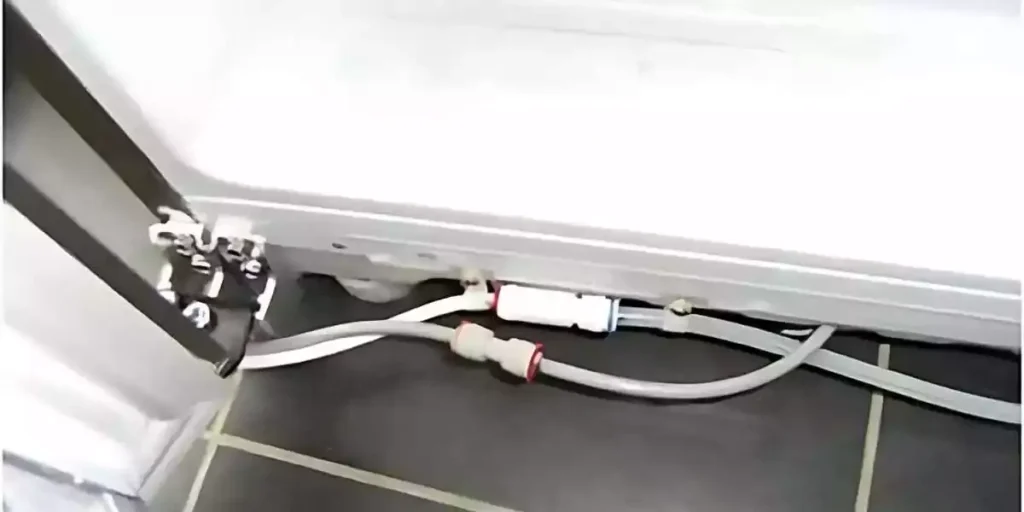
Inspect the water supply line connected to the refrigerator for any kinks, twists, or damage. Ensure that the water line is properly connected and tightly secured.
If you notice any issues, replace or repair the water line as necessary.
Replace the water filter:
Samsung refrigerators often come equipped with a water filter to remove impurities from the water.
For ice quality and to prevent clogs, replace the water filter regularly. This helps ensure a continuous flow of clean water to the ice maker.
Verify the freezer temperature:
Check and adjust the freezer temperature to the recommended setting, typically around 0°F (-18°C).
This temperature ensures optimal ice production and helps prevent ice from melting or freezing together.
Clear ice blockages:
Occasionally, ice can accumulate and block the ice maker’s mechanisms. If you notice any obstructions, gently remove them using a plastic utensil or by hand.
Avoid using sharp objects that could damage the ice maker.
Clean the condenser coils:
Dust and debris can accumulate on the condenser coil at the back or bottom of the refrigerator, reducing its efficiency.
Clean the coils using a vacuum cleaner or a soft brush to remove any dirt buildup. This improves airflow and helps maintain proper cooling performance.
Ensure proper ventilation:
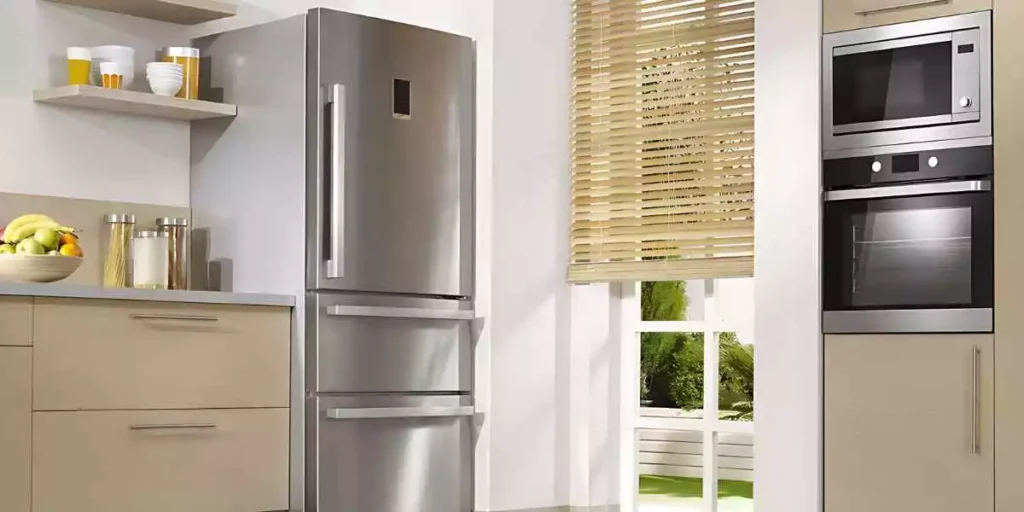
Adequate airflow around the refrigerator is crucial for its efficient operation. Avoid placing items directly against the refrigerator, particularly near the ice maker and vents.
Allow sufficient space for air circulation to prevent overheating and ensure optimal ice production.
Monitor for leaks:
Regularly inspect the area around the ice maker and the water supply connections for any signs of leaks.
If you notice water leakage, address the issue promptly by repairing or replacing the affected components.
Follow the manufacturer’s guidelines:
Check the user manual provided with your Samsung refrigerator for specific maintenance instructions.
Your ice maker will last longer if you follow the manufacturer’s guidelines.
FAQs
What Should I Do If My Samsung Refrigerator’s Ice Cubes Are Small Or Misshapen?
Small or misshapen ice cubes may indicate a problem with the water supply. Check the water pressure in your home and ensure it meets the recommended level.
Insufficient water pressure can result in smaller or misshapen ice cubes. A malfunctioning water inlet valve can affect the size and shape of the ice cubes.
Why Is My Samsung Refrigerator’s Ice Maker Leaking Water?
Water leakage from the ice maker can occur due to various reasons. It could be a result of a damaged water line, such as a cracked or disconnected tube, leading to water leaks.
The ice maker area can leak water due to a cracked assembly or a broken water inlet valve. Identify its source and inspect its components for any signs of damage or malfunction.
How Can I Address Bad-Tasting Or Smelly Ice From My Samsung Refrigerator?
If your ice cubes have an unpleasant taste or odor, there are a few steps you can take. Firstly, regularly replace the water filter according to the manufacturer’s instructions.
This helps ensure that impurities and contaminants are effectively removed from the water supply. If the refrigerator hasn’t been used for a while, make sure you have fresh water.
Avoid storing food items with strong odors in the freezer.
Why Is My Samsung Refrigerator’s Ice Maker Not Dispensing Ice?
Several factors can cause the ice maker to produce ice but fail to dispense it properly. In most cases, the dispenser motor, which drives the ice dispenser, is defective.
If the motor is faulty, it may not rotate or function correctly, leading to difficulties in ice dispensing.
There is also the possibility of a frozen ice bucket or ice buildup around the dispenser chute.
Conclusion
Ensure uninterrupted ice production with these maintenance tips for Samsung refrigerator ice makers.
Troubleshoot common issues such as no ice production, small or misshapen ice cubes, leaks, and bad-tasting ice.
Keeping your ice maker in optimal condition is as easy as following these steps. Maintain a steady supply of ice and enjoy the convenience it brings to your daily life.

